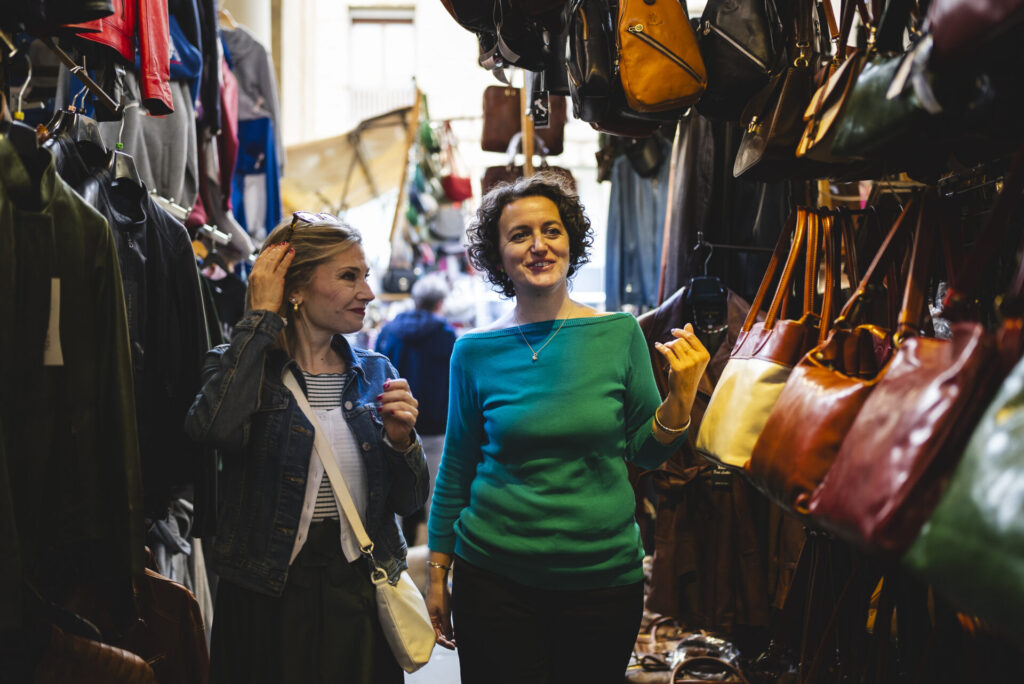Staying within the historic centre of Florence, there are many lesser-known places that deserve to be explored. All it takes is a bit of curiosity and comfortable shoes to enjoy new, uncrowded, and truly significant viewpoints. Few people know that the towers and entrance gates that gave access to Florence in the Middle Ages, protecting it from enemies, are still perfectly preserved. Some, after careful restorations, have been opened to the public and are accessible. In these lines, we tell you the story of the tallest tower, the only one to have maintained its original size from the 14th century to today: the Tower of San Niccolò. This is also the neighbourhood we have chosen to introduce you to in our tour of the less known paths of the city.
The Authentic Florence
The San Niccolò district is one of the most authentic areas of central Florence: here you can breathe an air of ancient craftsmanship and carefree pride that animates the narrow streets and numerous artisan shops, still reminding us of its folkloristic and peripheral origins. The Oltrarno area, of which San Niccolò is a part along with the Santo Spirito and San Frediano districts, began as a suburb on the banks of the Arno River. On the opposite bank, the city walls erected around the year 1000 enclosed the main parts of Florence: the religious, political, and economic centre had developed along the right side of the river. The Oltrarno was included in the city only starting from 1284, when the architect Arnolfo di Cambio was commissioned to design new walls that included the suburbs. San Niccolò thus became an integral part of Florence, growing in prestige until the final consecration of the Oltrarno in the 16th century when the Medici moved their residence to Palazzo Pitti in the Santo Spirito district, and many other wealthy Florentine families did the same.
A Modern City
The characteristic mediaeval city, enriched during the Renaissance by the construction of sumptuous private residences, experienced new development in the years immediately following the Unification of Italy. In 1865, Florence was chosen as the capital of the new Kingdom. With this change in function, the city needed a new look as a modern European capital. To erase the mediaeval imprint of Florence, considered obsolete, the architect Giuseppe Poggi destroyed the ancient mediaeval walls, sparing only the fortified gates. He then created a scenic staircase that, climbing the hill behind the San Niccolò gate, leads admiring visitors up to Piazzale Michelangelo. The same architect added the two external stairways that allow access to the guard floors of the tower. Since then, the Tower of San Niccolò, an ancient entrance gate and defensive site, has stood alone in the square, dominating the Lungarno with its imposing bulk and crenellated profile.
The Tallest Tower
Built between 1337 and 1345, the tower is made of strong stone and consists of three floors. On the rear side of each floor, facing the city, is a large arch under which the guard soldiers stood. On the lower floor, a 14th-century fresco still decorates the arch above the entrance door. The image of the Madonna with Child between Saint John the Baptist, the patron saint of the city, and Saint Nicholas of Bari, the saint of the district, greeted Florentines as they left the city. On the side facing the countryside, two niches flanking the arch housed statues now lost, possibly depicting two lions, the ancient symbol of Florence.
An Unusual View
Once you have climbed the 160 steps that make up the walkways, from the top of the 45-metre-high tower you can enjoy a new view of the district. Lean out from the narrow machicolations from which, in case of attack, boiling pitch was poured on the enemy. Below you, across the street, flows the Arno, which fed the fishery; behind you rises the hill of San Miniato crowned by Piazzale Michelangelo. It is thanks to the protection provided by this hill that the tower is the only one in the city to have preserved its original height: all the others were lowered in 1526, as they had become easy targets for the now widely used cannons. After a long and meticulous restoration, the tower is now finally open to the public. Climbing it not only means savouring a magnificent and unusual panorama but also reliving a moment of Florentine history, evoking the assaults and battles of the city, its trades, its expansions, and its fears over a span of five centuries.



